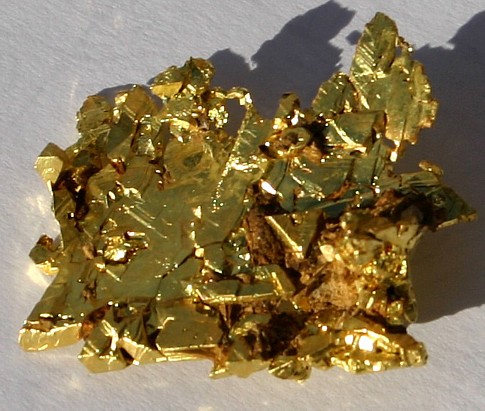North Carolina has definitely produced its share of very large nuggets, although most were produced long ago. In this state, by far the greatest production of very large gold nuggets, both as to size, value and quantity, has come from the Reed Mine, in Cabarras County, North Carolina, only a comparatively short distance from Charlotte. Taking the nuggets in the order of their weight, and not chronologically, the Reed Mine has yielded nuggets weighing 28 pounds, 17 pounds, 16 pounds, 13.25 pounds, 9.5 pounds, two 9 pounds, two 8 pounds, 5 pounds, 3.5 pounds, two 2 pounds, and if pounds, and an even peck of gold the size of beans and peas. The first discovery was made by a slave, as were also the 1 7-pound and 1 6-pound nuggets. In addition a quartz vein has been developed that assays from $10 to $300 to the ton.
The United Goldfields Corporation owns the next most important property in North Carolina, located near Albemarle in Stanley County. From their fine property they have now for safe keeping in the vaults of a New York trust company a 10 pound nugget, one 8 pounds, another 5} pounds, and one weighing 3 pounds, besides a dozen of about 1 pound and a couple of quarts of smaller pieces. Like the Reed Mine, this property has enormous ledges of gold quartz. It may be well to mention that the first gold ever discovered in the United States was found in North Carolina, the records of the United States Mint as far back as 1793 showing several thousand dollars of gold from that State. It is claimed that an 50 pound nugget was found near the Reed Mine, but we have no official data as to the discovery.
The Reed plantation, with its yield of nearly $60,000 in big nuggets alone, and its hundreds and thousands of dollars in smaller nuggets and dust, was not the only phenomenal producer of gold in the pioneer American diggings. The Beaver Dam Mine, in Montgomery County, was also a wonder. This was the property of a man named Thomas Fancy, who up to the time of the discovery of gold on it was a thrifty, steady going citizen. When he began picking up $700 worth of gold a day, however which was the amount his diggings yielded for months his sudden riches turned his head. He took to drink, and indulged in all sorts of extravagances. He was a great deer hunter, and it is said that it became his favorite pastime to go hunting with bullets run from pure gold. Old residents of the locality tell of the killing of a buck by a hunter, long after Fancy's death, in the shoulder of which, when this deer was dressed, he found a flattened piece of gold, while in its hip was another, nearly $100 worth of gold in all. It was supposed that these were a pair of Fancy's bullets with which he had wounded the deer some time when he was hunting. Fancy drank himself to death while his property was still yielding a fortune.
He dug into the hill three feet and came to a nest of gold in quartz, from which he took out 1,500 pennyweights that day. Next day he dug further and found another pocket, from which he took 1,000 pennyweights of gold, making the yield of the little knoll $2,500 in two days. The creek had already given up $10,000 in less than a mile. Barringer dug down twelve feet deeper and found $1,000 more gold, but he had got below the water level, and the water broke through from the creek and flooded his mine. Before he could repair the damage his title to the property was questioned, and litigation was begun, which, remained unsettled for more than a generation, leaving the Barringer Mine remaining in the same state as it was left when the water came in, with -all its hidden riches intact. This was the first gold quartz vein uncovered in the United States. Note that all the dollar amounts noted above are figured on a gold price of $20.67 per ounce, long the official US government price for gold.
Continue on to:
Large Nuggets, Part I: North Carolina
Large Nuggets, Part II: California
Large Nuggets, Part III: Western US States
Large Nuggets, Part IV: Across the World
Large Nuggets, Part V: Australia
Return To:
All About Placer Gold
Deposits


